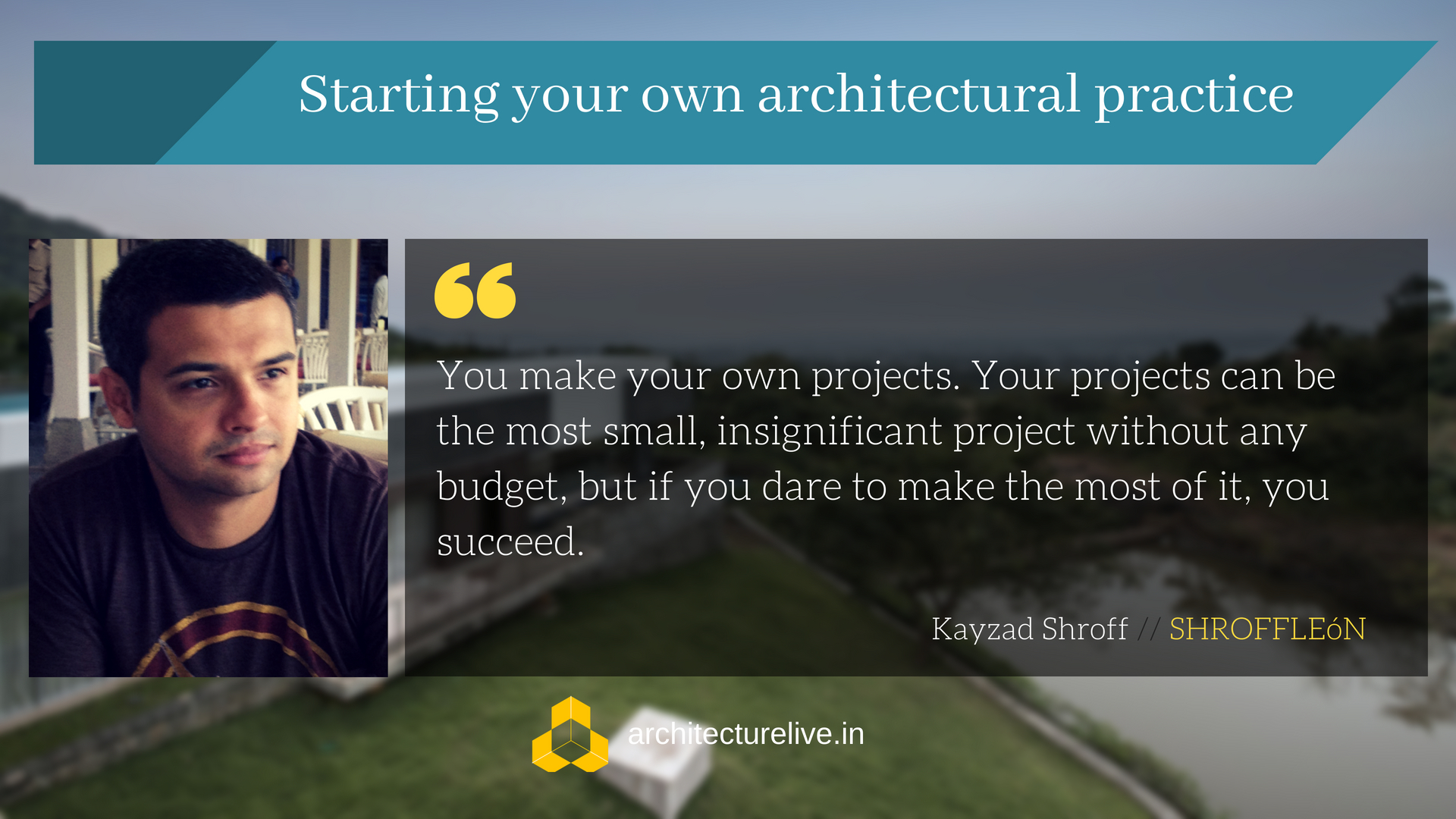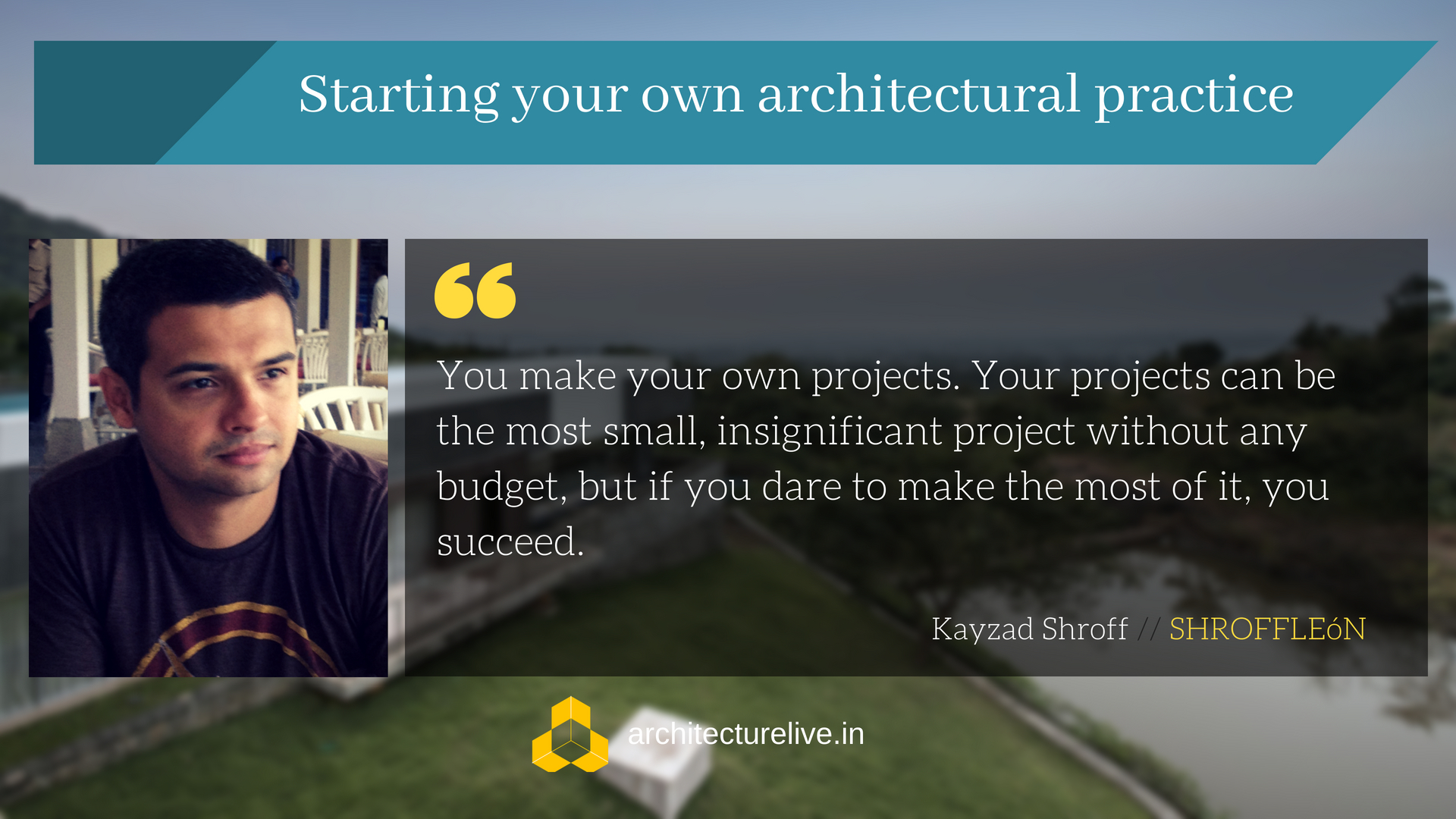 Asmita Patnaik – In conversation with Kayzad Shroff, Founder and Co-Partner of award winning young firm SHROFFLEoN which is based in Mumbai, where he works along with his partner – Maria Leon. SHROFFLEoN came into being in early 2011 and has managed to make quite a statement within the last decade.
Asmita Patnaik – In conversation with Kayzad Shroff, Founder and Co-Partner of award winning young firm SHROFFLEoN which is based in Mumbai, where he works along with his partner – Maria Leon. SHROFFLEoN came into being in early 2011 and has managed to make quite a statement within the last decade.
Kayzad weighs in on the opportunities and obstacles that comes with starting your own firm through his personal experiences on the same. He understands the anxiety and excitement that comes with starting your own practice and provides some valuable insight on the same;
SET REALISTIC GOALS – When you start off on your own, a lot of ideas that you have about starting and booming, in reality do not really exist. A lot of predisposed ideas such as getting work, especially good work right after you start out; gets shattered. Also, the lofty idea that you will end up getting great commissions right from the initial stages often meets with a harsh reality check.
If you ask me – In the initial stages; getting a project is a big deal, getting paid for it is a much bigger deal and staying on one project from the beginning to the end is a great deal. Your scale and the kind of projects you get grows organically, for all you know, your first project might just be a toilet in someone’s house.
When we first started, the first project we received was to design a terrace in someone’s house. It was just a 300 sq. ft terrace, but we spent our whole energy in doing the appropriate research and development, discussing different design strategies and investing a lot of time to give the client a product worth his salt. We learnt that to succeed, we need to make the most of what we get.
The best way to work through this is understanding that starting a business is a slow and grueling process.
UNDERSTAND THE BUSINESS ASPECT OF ARCHITECTURE – Design, interestingly, plays a very small role when you are running your own practice. Of course, you get the final say in a project, but a larger amount of your time goes in handling the logistics of the project.
As the principle architect of the firm you are expected to handle the finances involved in a project, the payroll, the financial sustenance of your firm, interact with vendors, have discussions with specialists, understand clients. Administration becomes a large part of how you run your practice.
In architecture schools, we aren’t provided with the appropriate grounding to the business aspect of architecture, so a lot is learnt on the go.
BUILD AND SUPPORT YOUR NETWORK – In the initial stages of starting a practice, a lot of different kind of dilemmas concur. It necessitates the need to reach out to peers and senior architects when one is in a predicament. Being a second-generation architect, I had a notable resource at hand.
My father being an architect himself, was very generous with his expertise and came across as a confounding resource, someone we could ask our queries; in the very initial stages of our practice, but at the same time there are many in the fraternity who will indulge you with their time and expertise. The network works on a give and take basis; sometimes our peers come to us for advice and sometimes we go to them for the same. Although this is beneficial, it is always suggested to generate most of the solutions internally.
Network also helps as a support system and can be utilized as a source for potential collaborations.
FOCUS ON PROVIDING GOOD SERVICE – To do well as a practice, your work should speak for you.
Most of the projects that come to us either come by reference of some client we have already worked for or as a repeat project by the same client.
For example, we did a project for a dentist once, who then, gave our referral to someone else – that’s how we landed our first apartment design project, a 1700 sq. ft apartment. What served us a one up was that, that client later introduced us to someone who wanted an animal shelter in Karjat.
We learnt that what a client reviews of your project, can speak more volumes about your work and help you get more references for future projects than any other influence. Competitions, awards and publications are more for reviewing one in the fraternity than outside. I feel that recommendations work better than anything else for obtaining new project.
BE OPTIMISTIC – I believe you should never give up. Be very stubborn in your approach. Do not give up when it comes to a client or a specific project and most importantly, do not give up on the profession. Things will seem down more often than you would like it to be, but it has a way of always getting better.








